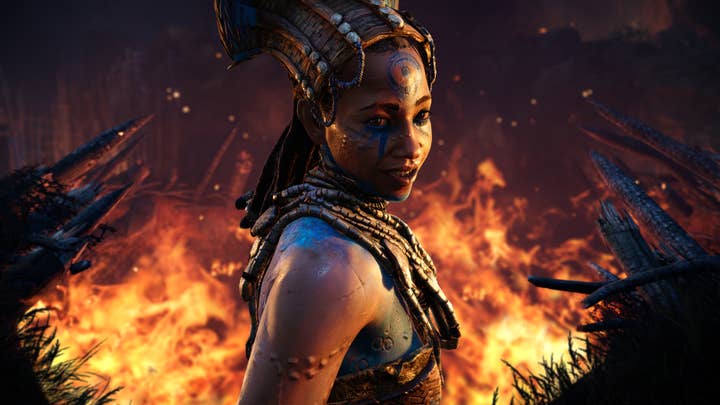Far Cry Primal: Selling the Stone Age
The creative director and marketing boss on shipping Ubisoft's mammoth title
It's a daring move to make a massive thematic change to a franchise. Making a change that removes all the guns can seem, from the outside, to be total madness, but that's exactly what Ubisoft did with the latest instalment of its Far Cry series. GamesIndustry.biz spoke to Thomas Simon, game director, and Thomas Seris, senior brand manager, about the creation and marketing of this Stone Age story.
"I think there's a natural fit between the Stone Age and the Far Cry franchise. That's why there was a strong buy in from everyone, because we see it as the first frontier and that's a concept we really like to explore in all Far Cry games," says Simon.
"It was the first time man started fighting with each other while still being chased by very dangerous wildlife, it's an ideal setup."
He reveals that the concept was first circulated during the development of Far Cry 3 and work began on the project during the development of Far Cry 4.
"A Far Cry game does not have to be necessarily ultra realistic but it has to be believable"
"A Far Cry game does not have to be necessarily ultra-realistic but it has to be believable. For that there's really a sweet spot to find where the experience still affords the freedom and fun that we like, and at the same time feels grounded, like you're part of a world that has rules and logic behind it that you can join and accept."
While the development team were busy creating the world, it was up to the marketing team to start selling it to press and hardcore Far Cry fans.
"Far Cry Primal is a completely fresh take on the franchise and our marketing plans reflect that," explains Seris.
"In terms of support, our plan is in line with Far Cry 4. The Stone Age was a brutal and challenging time and our goal with the campaign was to bring that to life for players."
Part of the campaign included getting the game in the hands of press quickly, to allow them to not only play the game but ask questions about it too.

"Shortly after we revealed the game, we gave specialist press an opportunity to get hands-on time with the game and conduct developer interviews. This gave the press a chance to tangibly experience new aspects of the game and to answer questions they might have had since the announcement.
"Providing press with hands-on time was a core component of our campaign because one of the special things about Far Cry is its systemic feature; they could then share those unique experiences with viewers and readers."
Seris particularly emphasised the importance of the YouTube and Twitch community when it came to spreading the word.
"These content creators are some of the most passionate gamers and their feedback, interest and support goes a long way," he says.
"YouTube and Twitch are important platforms for our campaigns and Far Cry Primal is the perfect game for these platforms. The systemic nature of the open-world creates an unpredictable playground where anything can happen at any time."
The biggest change to the series, and the one I personally had the most questions about when it was announced, was the absence of guns. Having now played it, I don't miss them, especially not when riding my tamed sabre-tooth while shooting off multiple arrows. That's thanks to a careful balancing act by the development team, says Simon.
"The idea was really that even though we know we don't have automatic weapons we wanted to give the same tactical freedom for players between short-range, long-range. Weapons that you use aggressively, some weapons that are more stealthy.
"All that was really core and we did a lot of work to adapt the world, the animals, the enemies, to that loop. We had to change the range at which they attack you, the weapons they use, in order for the gameplay, the combat loop, to find a new equilibrium."

